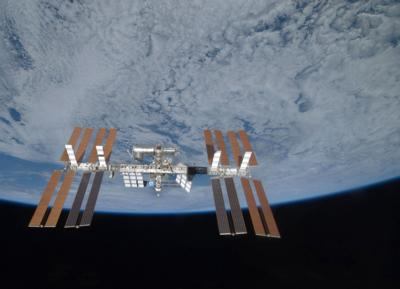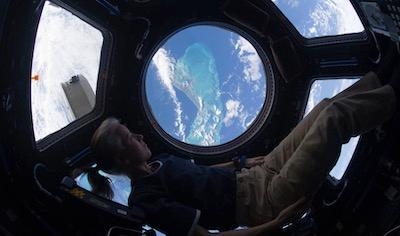Mon, Jul 01, 2024
Doesn't Seem Right -- Watery Grave Planned for 30-Year Old Station
SpaceX has won the NASA contract to build the vehicle that will bring the International Space Station (ISS) out of orbit and to its resting place on the seafloor in a remote ocean location.

The deorbit vehicle contract is worth about $843 million for Elon Musk’s SpaceX. NASA will operate the mission using SpaceX’s technology, it said. The current contract does not include the cost of launching the vehicle, and the separate contract for that will potentially go to SpaceX as well.
The first structural sections of the ISS were launched into a 250-mile orbit above the Earth in 1998. Some areas like core power sections and crew cabins were designed with a lifespan of only about 30 years, and much of the aging infrastructure is not easily or economically replaceable. And while not everyone agrees with the plan, international operators of the ISS will begin the process of decommissioning the station in about 2030.
The ISS is not a small object circling the Earth. It is 356 feet long or about one yard shy of an American football field including the end zones. The solar panels cover an acre, and the 13,696 cubic feet of habitable volume for crew members include 7 sleeping quarters, 2 bathrooms, and a gym. There is also a bubble-like bay window or cupola with a 3600 view.

In planning for the fate of the ISS after its useful life, NASA and its international partners wanted to be mindful of the problem of the amount of space debris circling in low Earth orbit and desired to remove as much of the station as possible. The deorbit vehicle will contain or attach to station components and using SpaceX’s successful technology will be programmed to ensure avoiding populated land areas while falling into a remote area of Earth’s oceans.
NASA Associate Administrator for Space Operations Mission Directorate, Ken Bowersox said, "Selecting a US Deorbit Vehicle for the International Space Station will help NASA and its international partners ensure a safe and responsible transition in low Earth orbit at the end of station operations. This decision also supports NASA’s plans for future commercial destinations and allows for the continued use of space near Earth."
More News
Airplane Bounced About 3 Ft Then Touched Back Down And Then, With No Brakes Applied, The Airplane Began Veering To The Left Analysis: The pilot entered the airport traffic pattern >[...]
Aero Linx: British Microlight Aircraft Association (BMAA) The primary focus within all aviation activity is SAFETY. In all aspects of our sport SAFETY must come first, whether it b>[...]
From SnF25 (YouTube Edition): William Wynne Builds Practical Aircraft Engines on the Corvair Platform Seeking an affordable alternative to the traditional aircraft engine options, >[...]
How To Get A Story On Aero-TV News/Feature Programming How do I submit a story idea or lead to Aero-TV? If you would like to submit a story idea or lead, please contact Jim Campbel>[...]
From 2023 (YouTube Edition): Bridge of CiES CiES Inc. is a Bend, Oregon-based designer and manufacturer of modular embedded aircraft systems and sensors. The company’s fuel-l>[...]
 NTSB Final Report: Aviat A1
NTSB Final Report: Aviat A1 ANN's Daily Aero-Linx (07.08.25)
ANN's Daily Aero-Linx (07.08.25) Classic Aero-TV: Fly Corvairs Reliable Engine Alternative
Classic Aero-TV: Fly Corvairs Reliable Engine Alternative ANN FAQ: Contributing To Aero-TV
ANN FAQ: Contributing To Aero-TV Classic Aero-TV: CiES Fuel-Quantity and e-Throttle Systems Praised
Classic Aero-TV: CiES Fuel-Quantity and e-Throttle Systems Praised




